The Ultimate Guide to Kratom for Beginners- [Updated 2021]
Table of Contents
Overview
Natural supplements have always been a popular choice among health-conscious consumers. If you have a headache, don’t immediately go for the aspirin – take some chamomile tea. Natural remedies and supplements can be a great alternative to many chemical concoctions you’ll find over the counter. one of the most potent such remedies is only now hitting the western markets – kratom products.
Coming from a tropical evergreen tree native to Southeast Asia, kratom has a long history of use. For centuries, people have used it to combat an array of health issues and boost their overall wellbeing, and now, Western markets are also starting to notice it.
It’s still a largely obscure remedy in these parts of the world, but as kratom benefits become more evident, more and more consumers are interested in giving it a try. However, despite its rising popularity, not many consumers know of the kratom effects (or the kratom side effects!). Many do not even know the answer to the simple question – what is kratom? Is kratom illegal? Is it safe? Can you develop a kratom addiction?
If you’re curious about giving kratom a try, it is in your best interest to learn the answers to these questions and more. So, let us get started. This ultimate kratom guide will provide you with all the information you need to decide whether you should buy kratom and experience its effects first-hand.
What is kratom?
As mentioned, the kratom plant is an evergreen tree found in Southeast Asia in countries like Indonesia, Thailand, Malaysia, Papua New Guinea, and Myanmar. It has many different names – biak-biak, ketum, kakuam, thang, and Thom, to name but a few, but scientifically, it is known as Mitragyna Speciosa.
Belonging to the Rubiaceae family (the same family that coffee belongs to), the people of Southeast Asia have used it as an herbal remedy since at least the 19th century – although probably much longer. Since kratom is a powerful stimulant, farmers and day laborers commonly used it to boost productivity and enhance performance. However, it can also work as a sedative at larger doses, making it valuable for pain management.
Reports indicate that in countries like Thailand, people presented kratom to welcome guests into the home. It was an essential part of religious ceremonies used during the ritual worship of gods and ancestors in some areas.
Today, kratom is most commonly used as herbal medicine due to its abundance of benefits that we’ll discuss in a moment. However, more and more people are starting to use it as a recreational drug, which is why the FDA and DEA are cautioning against it.
While Mitragyna bears fruit, the kratom drug is extracted from the tree’s leaves. Traditionally, kratom users in Southeast Asia will harvest the leaves by hand, chew them fresh or leave them to dry in the sun. Dried leaves can then be smoked or turned into a powder, which is then brewed into kratom tea.
Since the kratom tree cannot grow in the US, the UK, or Canada due to the climate, all kratom available in the West comes from farms in Southeast Asia. If you’re wondering where to buy kratom, you can usually find it in stores selling herbal medicine and supplements. Alternatively, you can also get kratom online.
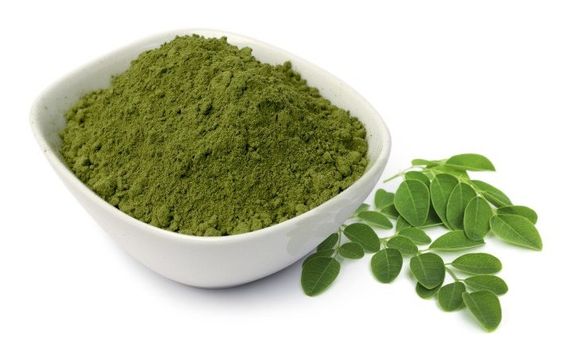
Source: https://jetkratom.com/
How does kratom work?
Before you head to the nearest herbal medicine store to buy yourself some of this natural remedy, you should learn more about how it works. What does kratom do, and how does it affect you?
Kratom is a phytochemical – it’s filled with an array of biologically active compounds that impact your body and mind. Two of its most essential compounds include Mitragynine and 7-hydroxy-mitragynine, relatively similar to the psychoactive compound found in magic mushrooms – psilocybin.
It’s believed that these compounds work in much the same manner as opioids. They bind with the opioid receptors in the brain, spinal cords, and other organs, exerting different effects at different doses. Naturally, this begs the question – is kratom an opioid? In essence, yes. It can work as a powerful opiate that has sedating and pain-relieving effects. However, is kratom addictive? The answer is a bit more complicated.
Mitragynine and 7-hydroxy-mitragynine mainly target the mu receptors in the brain. Those are the same receptors that are activated whenever you experience pleasure – when eating or making love. Such activities release neurotransmitters, activating the “reward system” in your brain thanks to increased dopamine, making you feel euphoric and getting you to seek out more of these activities.
The rush of dopamine you experience induces the feeling of euphoria and leads to pain relief. Unfortunately, it can also lead to you developing a dependence.
Traditional opiates like morphine or OxyContin tend to create a strong bond with opioid receptors, meaning they quickly lead to developing an addiction if you don’t follow your doctor’s recommendations.
Kratom is slightly different. Its bond with the mu receptors is weaker, meaning its potential for causing dependence is also weaker. That also makes it more challenging to experience a kratom overdose.
Compared to other opiates, kratom is significantly less likely to be addictive. Moreover, it’s commonly used in treating addiction to other opiates.
Different types of kratom products
You’ll rarely find a plant that has a single strain. Even a simple rose comes in many different variations – Bourbon rose, Damask rose, the white rose of York. So, it’s not surprising that kratom doesn’t come in a single variety, either.
You can choose from several different strains, each lauded for its unique effects and properties. Some of them make the best kratom for pain, others the best kratom for anxiety.
Moreover, you can choose from several different kratom product types. You don’t have to use the raw dried leaves unless you want to.
Let’s get into the specifics of some of the most common kratom strains and products with all this in mind.
Kratom strains
Like cannabis, for example, kratom has dozens of potent strains, and you’ll hear talk about Maeng Da kratom, Bali kratom, green Malay kratom, and more. Most commonly, the strains get their name from their place of origin. However, while the place of origin is important, what determines the strain’s effects is dependent on the color of the leaf veins, which can be red, white, or green.
Red vein kratom has properties that are different from either white or green vein kratom. However, every subcategory of the red kratom will have much the same effects, the only difference usually being the potency.
If a specific strain doesn’t suit you, you can alter it slightly by mixing different quantities of red, green, and white kratom.
Red vein kratom often acts as a powerful opiate. It has potent sedating and analgesic properties, making it the perfect type of kratom for pain. Instead of making you feel euphoric, it soothes and relaxes you.
Red kratom is most commonly used for overcoming pain, anxiety, muscle stiffness, and insomnia. However, it’s most famous for relieving withdrawal symptoms caused by other opiates.
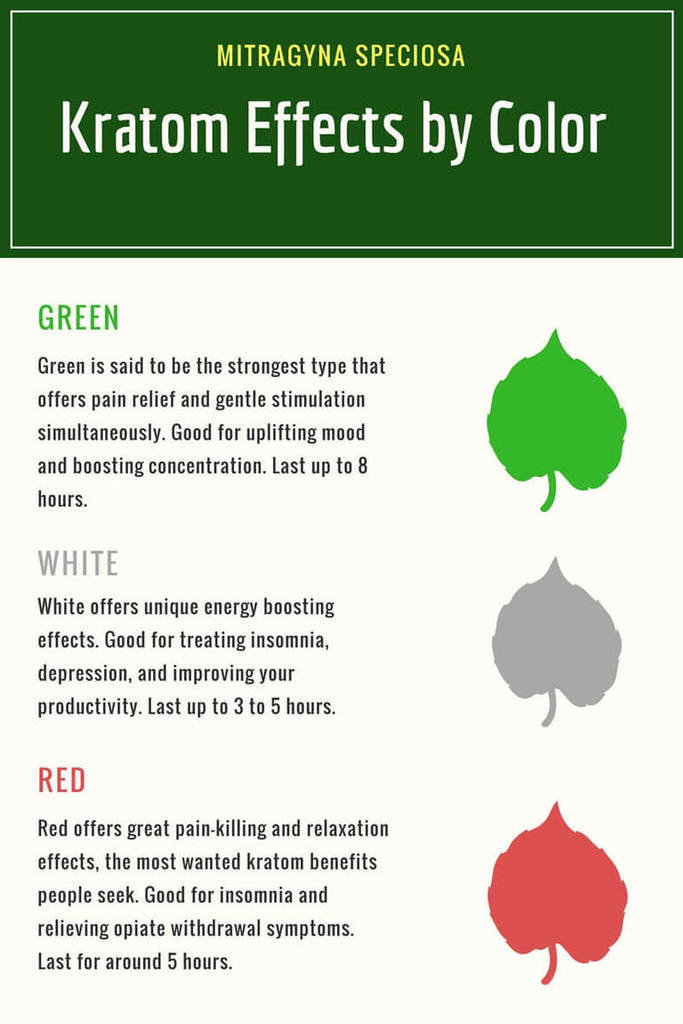
Source: https://nootroholic.com/best-kratom
Types of kratom with high quantities of red vein kratom include:
- Red Bali kratom
- Red Maeng Da kratom
- Red Borneo kratom
- Red Thai
- Bentuangie
- Red dragon
- Red Hulu
Most users consider white vein kratom to be the exact opposite of red vein kratom. It’s stimulating, energizing, and you’ll feel a hike in euphoria within just a few minutes of using it.
It was one of the most popular strains among farmers and day laborers in Southeast Asia as it increased concentration, alertness, and boosted mood. It’s one of the kratom strains that resemble coffee the most, making it evident that Mitragyna Speciosa truly belongs to the coffee family.
Types of kratom with high quantities of white vein kratom include:
- White Maeng Da
- White Indo
- White Thai
- White Sumatra
- White Borneo
While white vein kratom is the most popular type in Southeast Asia, western consumers prefer green kratom. It essentially combines the powers of white and red kratom to deliver an authentic experience. It’s smoother and more subtle than either of the strains mentioned above.
It can be energizing and relaxing, sedating and stimulating – it all depends on the dose you take. Lower doses make green kratom resemble a subtler version of white kratom. On the other hand, higher doses make it more similar to red kratom.
Types of kratom with high quantities of green vein kratom include:
- Bali gold
- Green Malay kratom
- Elephant
- Green Thai
- Green Maeng Da
- Green Borneo
- Green Hulu Kapuas
As a general rule of thumb, beginners are better off starting with small doses of green vein kratom since it’s more subtle than other strains.
Kratom products
Regardless of the kratom strain you go with, you’ll find it in many different shapes and forms. A vast majority of vendors will offer kratom powder, so that’s the product you’ll come across most frequently.
Kratom powder is simply raw sun-dried leaves crushed into a powder. You can use it to brew kratom tea or add it to your morning smoothie.
Kratom pills are the best product for those who want to avoid the strong kratom flavor. The plant is an acquired taste, to say the least. It’s earthy and bitter, so not many users enjoy it.
Kratom capsules and pills contain pure kratom powder encased in hard gelatin, so your experience will be the same as when using kratom tea – you simply won’t have to experience the flavor.
Finally, one of the rarest kratom products is kratom extract. Not every vendor will have it, but it’s slowly growing in popularity. Kratom extract comes in a liquid form, and you use it by placing it under your tongue.
The main benefit of extracts is that they can be combined with other herbal remedies so that you can get CBD kratom, for example.
Proven benefits of kratom
As a sacred herbal medicine, kratom is claimed to be a potent treatment for dealing with numerous mental and physical health conditions. Does any truth lie in these claims, or is it all just old wives’ tales? Is kratom safe, and should you use it to improve your health?
While we still need more research to provide conclusive evidence of the potency and effectiveness of kratom’s medicinal properties, there are several proven benefits that users might enjoy. Kratom can act as an antinociceptive (block the detection of pain), antidepressant, and anxiolytic (alleviate anxiety), among other things. Take a look.
Kratom for pain
Many users report self-managing chronic pain with small doses of kratom powder. Due to its antinociceptive properties, kratom could be a viable treatment for chronic and inflammatory pain. However, instead of helping to treat the cause of pain, it prevents your perception of it.
Considering that kratom can act as a powerful opiate (although it’s different from traditional opiates), pain relief is a given.
Kratom for anxiety
Due to its anxiolytic properties and sedating effects, kratom could be used to manage anxiety’s physical and mental symptoms. However, its anxiolytic effects could vary by strain.
As mentioned, different strains exhibit unique effects. Since white kratom tends to act almost like coffee, boosting your energy levels and increasing your alertness, it’s not a good idea to use this strain for anxiety. Instead of alleviating its symptoms, white kratom could enhance them.
That is why most users dealing with anxiety typically go for red vein kratom. It’s more relaxing and sedating than other strains.
Kratom for energy
Kratom strains that aren’t suitable for anxiety are usually great for giving you an energy boost. Kratom has stimulating properties that could enhance your mood and make you feel euphoric and alert. White and green vein kratom is usually the best for improving energy levels and helping you feel more focused.
Kratom for depression
Although we don’t have much research on the topic, some studies suggest that kratom could help manage mood disorders like depression. Most of the studies are based on anecdotal evidence and self-reported results.
Users relying on kratom for treating depression have reported a perceived reduction in symptoms and better overall mental health. Once again, the effects are usually dose-dependent.
Since the compounds mitragynine and 7-hydroxy-mitragynine bind to the mu receptors, they can increase dopamine levels and make you feel pleasure and euphoria.
It’s critical to note that when used for depression, you should never mix kratom and alcohol (or any other drug, for that matter). Alcohol is a depressant and could worsen the symptoms of mood disorders.
Kratom for opioid withdrawal
The most promising benefit of kratom is that it could help treat opioid withdrawal symptoms. Unfortunately, developing an opioid dependence is more common than it might appear at first glance. After being on painkillers for a while, your body gets used to the drugs and develops an addiction. If you stop taking them, you could experience withdrawal symptoms like trembling, sweating, and vomiting, to name but a few.
Kratom has proven to be quite effective at alleviating these symptoms. Since it acts similarly to common opioids, it activates the same neurotransmitters and receptors. It can make you feel more at ease during the withdrawal phase.
Moreover, since its potential for abuse is significantly lower than for opioids like morphine, users generally feel like it’s a good alternative.
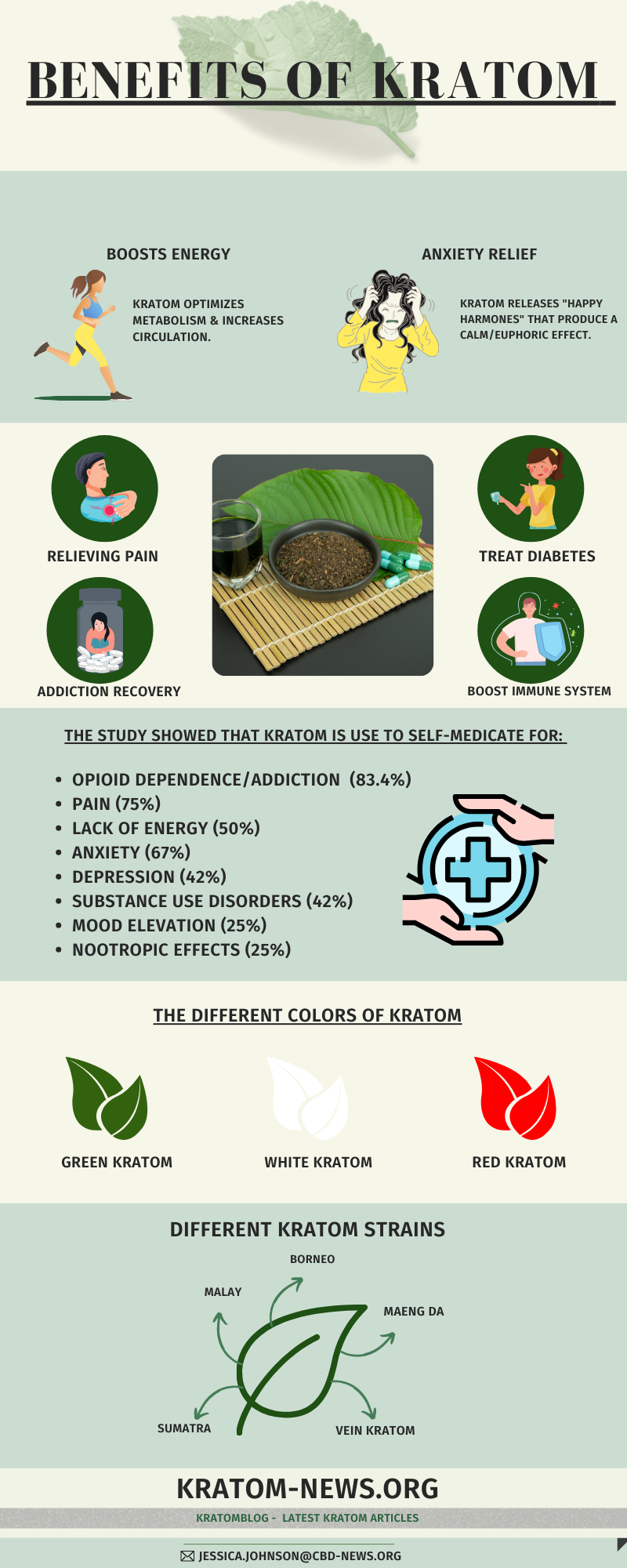
Directions to use kratom
Using kratom is a relatively streamlined process, especially if you’re using kratom capsules. They’re filled with a pre-determined dose of kratom (usually up to 0.7 grams), and you can just take them with a glass of water.
If you’re using kratom extracts, the method of consumption is a little different. Typically, you’ll find extracts in a 15ml bottle with a dropper. Each bottle should contain up to 130mg of Mitragynine, which comes up to a little over 40mg per serving.
You can place the extract directly under your tongue and keep it there for about 30 to 60 seconds. Swallow, and you’re done. Alternatively, you can place a few drops of kratom into your tea or mix it with your morning OJ.
Kratom powder is a bit different. In most cases, the powder will contain about 13% Mitragynine in one gram of product. Most consumers will use the powder for brewing kratom tea.
If you want to ensure your tea is potent and effective, you need to be careful with how you prepare it. Beneficial alkaloids can lose their properties if you expose them to high temperatures.
So, never pour boiling water on your kratom. Reduce it to a simmer, then steep the powder for 20 minutes. Add a sweetener and some lemon juice, and have yourself a cup of delicious kratom tea.
Regardless of how you take kratom, it is critical to pay very close attention to the dose. Kratom dosage isn’t an exact science, so it will likely take some trial and error until you get it right.
Factors like body weight, sex, diet, medical conditions, metabolism, and more will impact how different doses will affect you.
Start small, taking up to 1g of kratom at a time. Increase the dose ever so slightly until you hit the sweet spot and get the results you want. Kratom overdose is always a possibility, so never take two or more doses at once.
Most users agree that the average dose is between 1g and 5g.
To avoid cumulative effects, you’ll need to know the answer to the simple question – how long does kratom last? It usually starts taking effect within 15 minutes of consumption, peaking around 1.5 to 2.5 hours later. You should continue feeling the effects for 5 to 8 hours after taking your dose. Don’t take more than a single dose every 8 to 12 hours to stay on the safe side.
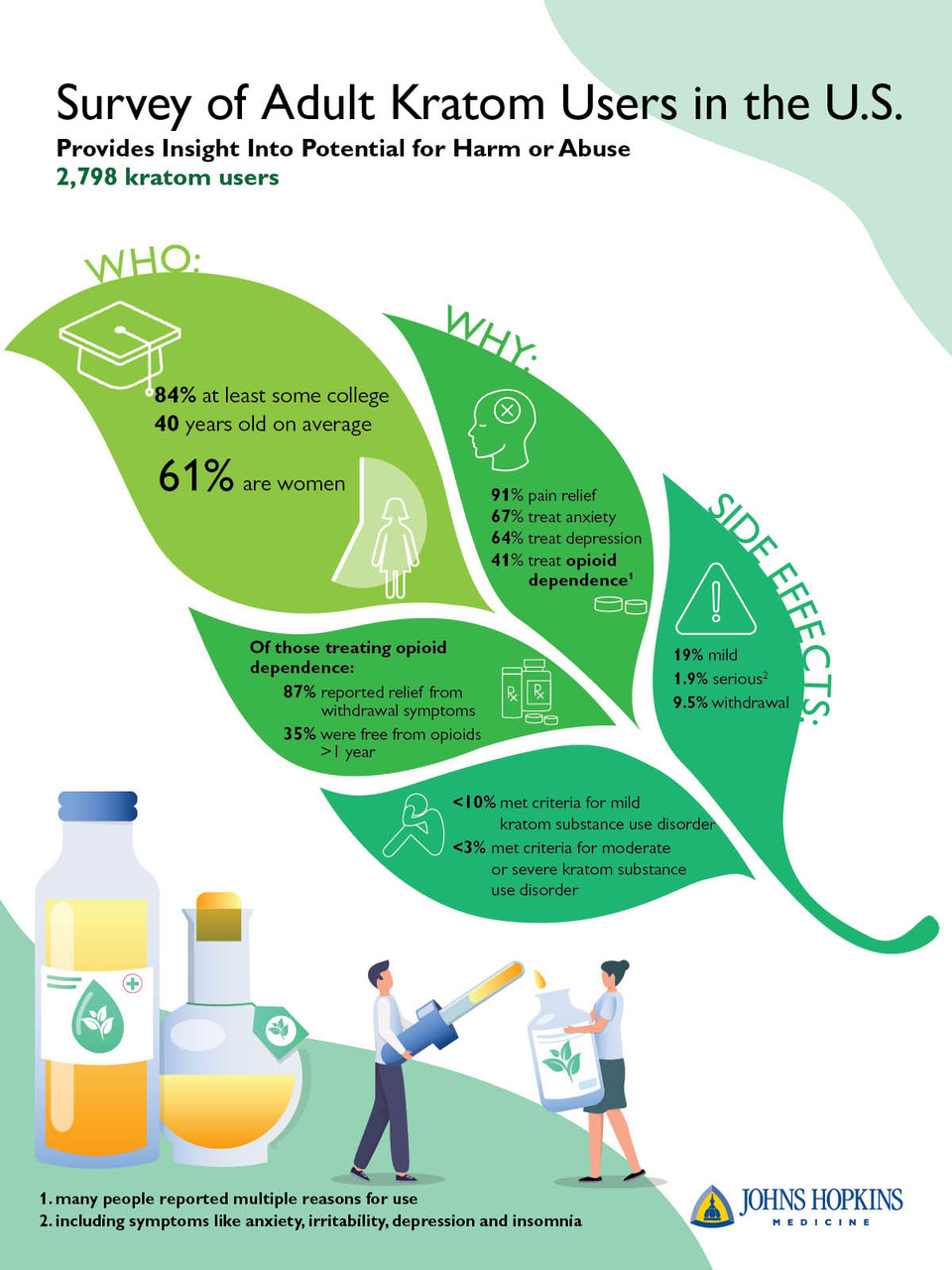
What do studies say about kratom?
With the number of kratom users increasing worldwide, more and more people are looking for answers to what kratom is, its risks and benefits, and how it affects your body and mind. Unfortunately, though, science has yet to shed more light on these topics.
There is a significant lack of research and studies on kratom, leaving too much room for myths and misconceptions.
Studies have proven that Mitragynine has opioid-like analgesic effects that can alleviate pain and even block pain signaling. Due to its mild anti-inflammatory properties, it could aid in the treatment of inflammations and work to relieve inflammatory pain. Additionally, it appears that Mitragynine tends to inhibit pro-inflammatory mediator release, enhancing immunity in the process.
Since it has an affinity for binding to the receptors in the central nervous system, most notably dopamine and serotonin receptors, there are indications that Mitragynine could help fight mood disorders. It could also slow the development of opioid tolerance when taken together with common opiates.
Research also suggests that kratom carries some risks for consumers, especially at higher doses.
One small-scale animal study suggested that kratom has addictive potential and can lead to developing withdrawal symptoms. Its addictive potential and toxicity lie in the compound 7-hydroxy-mitragynine, accounting for only 0.02% of kratom. Mitragynine poses only a minor risk but a risk, nonetheless.
Kratom can lead to seizures, arrhythmia, memory impairment, coma, and even death at higher doses. Studies indicate that kratom poses the most significant threat when used in combination with other drugs.
Since kratom’s effects are heavily dose-dependent, more research needs to be done to prove its benefits and risks. For now, it’s important to remember to use kratom responsibly and be careful with the dosage.
Important kratom products shipping policies
If you’ve decided to give kratom products a try, you need to be aware of the relevant shipping policies that may affect your order. In most cases, your chosen vendor will inform you about which services they use for shipments and which places they can send their products to. Make sure to contact your vendor’s customer support team to find out whether they can deliver to you.
With this in mind, let us look at kratom shipping policies in the US, the UK, and Canada.
Kratom products shipping policies in the US
Kratom isn’t federally regulated in the US, so most vendors can send it as regular mail, using USPS, FedEx, or USP services. You need to be 18 years old to make and receive your kratom orders.
However, just because kratom isn’t federally regulated, it doesn’t mean that every state allows it. Several states have banned or restricted kratom, including:
- Alabama
- Arkansas
- Indiana
- Rhode Island
- Vermont
- Wisconsin
- Sarasota County, FL
- Union County, NC
- Denver, CO
- San Diego, CA
If you reside in any of these locations, you cannot use, possess, sell, or receive kratom shipments. You can use kratom and receive your products via mail, and you can do this in all other states in the US.
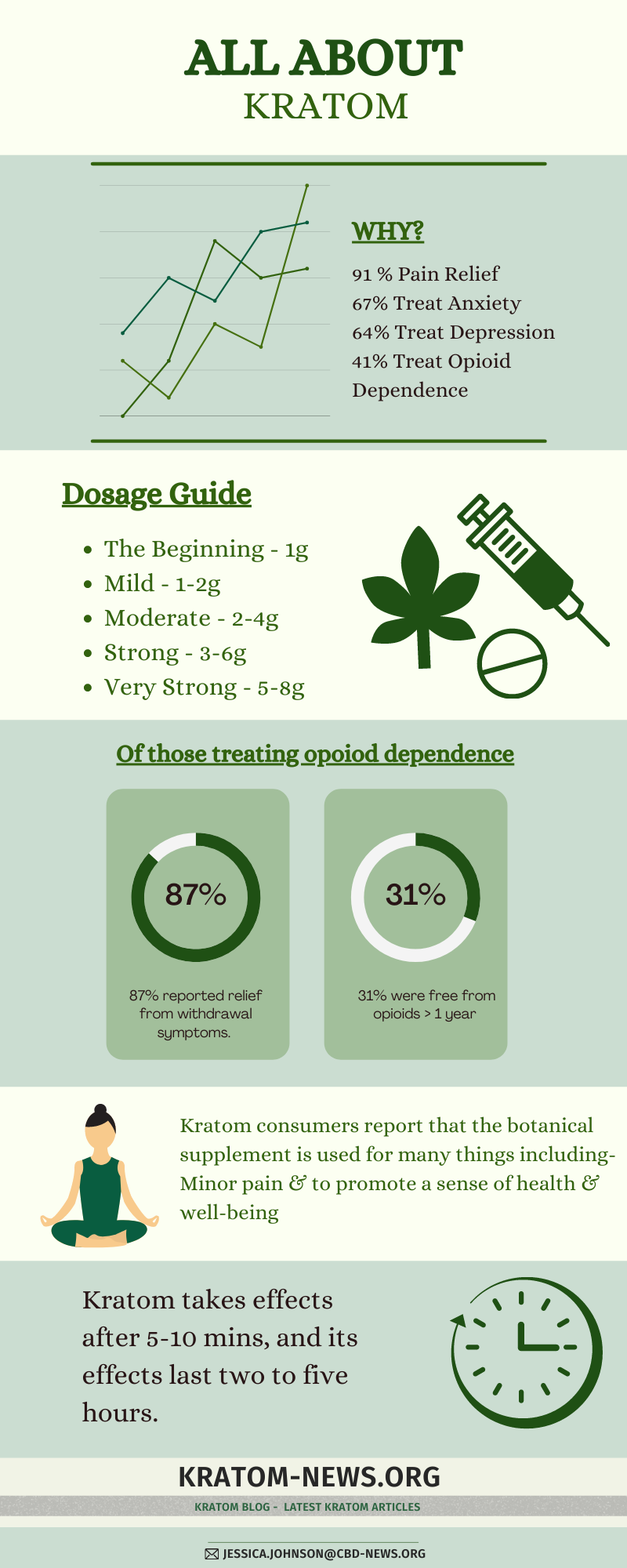
Kratom products shipping policies in the UK
Although kratom was one of the most popular herbal remedies in the UK with thousands of users, it’s been made illegal in the UK with the introduction of the Psychoactive Substances Act in 2016. After leaving the European Union, the UK lost its customs union, and now, the import of kratom is illegal.
Unfortunately, you cannot have kratom shipped to you in the UK.
Kratom products shipping policies in Canada
Although Health Canada classified kratom as an herbal supplement that could cause health issues when consumed, kratom remains legal. All kratom products must have a label stating that kratom is “not for human consumption,” but besides this, you should expect your kratom shipments to arrive as usual.
Don’t be surprised if you see vendors in Canada marketing kratom as “incense” or “aromatherapy.” Since it’s illegal to sell & market kratom as fit for human consumption, most stores will find innovative ways to market their products.
Many brick-and-mortar and online vendors will ship kratom products via mail without a problem, with many offering same-day deliveries if you are in the same province.
Regardless of where you’re located and what kratom laws are active in your area, it’s critical to check with your specific vendor about their kratom shipping policies as they might differ.
Read before you purchase kratom products!
Considering its benefits and low risk of adverse effects, if you’re a responsible user, you might be tempted to purchase kratom products from the first vendor you come across. However, that’s usually not in your best interest.
With the global kratom market quickly expanding, more and more vendors are starting to pop up, and not every one of them offers high-quality products. If you want to stay on the safe side, you’ll devote some time to reading and researching about your vendor.
Primarily, you’ll want to look into user reviews – they’ll give you excellent insight into a brand’s reliability. You’ll learn more about how kratom effects different consumers, get information on the vendor’s shipping policy, the responsiveness of their customer support teams, and the quality of their products.
However, always take user comments with a grain of salt. Both satisfied and dissatisfied users tend to exaggerate slightly.
Secondly, you’ll want to look into the brand’s reputation and transparency. Do a quick Google search for the vendor’s name and see whether any review sites mention it. Go to the “news” section to find any recent events regarding the brand.
Finally, read up on the vendor’s kratom products. Unfortunately, they aren’t standardized, and they can differ wildly from store to store, especially if you’re buying kratom extracts or capsules. They can contain different quantities and concentrations of Mitragynine, which can significantly impact your dose.
What is a kratom lab test?
Ideally, you’ll only want to buy kratom from vendors that invest in third-party lab testing. Lab tests are critical for several reasons – they prove that the product is, indeed, kratom, that it is the strain that the vendor claims it is, and that it is free of contaminants.
Most commonly, lab tests will look into:
- Kratom profile
- Mitragynine and 7-hydroxy-mitragynine profile
- The presence of bacteria like Salmonella and E. coli
- The presence of mold
- The presence of yeast and fungi
- The presence of heavy metals
- The presence of harsh chemicals
The best vendors will only sell kratom products that pass lab tests with flying colors.
However, keep an eye out for fake lab reports – unfortunately, they’re more common than many of us would like.
Examine the lab-tested certificate to find which laboratory tested the product. Do a bit of research on the lab to determine whether it’s trustworthy and reliable. If you want to go a step further, reach out to the lab to ensure that their tests are genuine and follow all protocols.
Is kratom legal?
One of the most critical questions any kratom enthusiast should ask is – is kratom legal? Before you start using kratom freely and ordering it left and right, you need to know whether you are breaking the law when doing so.
Unfortunately, kratom legality is a complex issue. In many countries, the plant is in a legal gray area, making the laws confusing and open to interpretation.
Although there were some concerns that the DEA would ban kratom in the USA and list it as a Schedule I substance, there are no federal regulations regarding kratom at the time of writing. In the USA, kratom is legal in all but six states and four districts (Alabama, Arkansas, Indiana, Rhode Island, Vermont; Wisconsin; Sarasota County, FL, Union County, NC, Denver, CO, San Diego, CA).
Here are the countries where kratom is legal:
- Albania
- Austria
- Belgium
- Bosnia
- Cyprus
- Czech Republic
- Denmark (only legal with authorization from Danish Medicines Agency)
- Germany
- Greece
- Hungary
- Kosovo
- Malta
- Montenegro
- Netherlands
- North Macedonia
- Norway (only with a doctor’s prescription)
- Serbia
- Slovakia
- Spain
- Ukraine
- Canada
- Mexico
- Bolivia
- Brazil
- Chile
- Colombia
- Guyana
- Paraguay
- Peru
- Uruguay
- The Bahamas
- Costa Rica
- Dominican Republic
- El Salvador
- Honduras
- Nicaragua
- Panama
- Puerto Rico
- India
- Thailand (only for medicinal use)
- New Zealand (only with a doctor’s prescription)
In summary
As you can see, kratom is an unusual plant with a complicated legal status in many places worldwide. If you want to start using it, whether for treating any specific conditions or for a holistic approach to health, it’s in your best interest to use caution and do some research.
Kratom has an abundance of benefits. It can alleviate pain, inflammation, and anxiety. It can aid in treating mood disorders, and it can even help consumers overcome their opiate addictions.
However, it also has plenty of potential drawbacks. While the risk for abuse is lower than with other opiates, it’s a possibility. Overstepping your dose and mixing kratom with other drugs and alcohol could result in worsening health conditions, seizures, even coma.
All kratom enthusiasts must be responsible users and obtain kratom from reputable sources that invest in third-party lab testing.
Moreover, all users need to research their local laws and determine whether kratom is safe to use in their area.x
FAQs
Kratom is commonly used in the treatment of opioid addiction as it can alleviate the symptoms of withdrawal. However, it can also cause addiction when used frequently and in large amounts.
Although it’s not a typical opioid, it does have some similar characteristics. It binds to the mu receptors in the central nervous system, alleviating dopamine levels and activating the pleasure center in the brain. It’s these characteristics that increase the potential for abuse and make kratom addictive.
All users should be cautious when using kratom, paying close attention to the dosage and avoiding frequent use.
While kratom has countless potential benefits, users report several side effects. In most instances, the side effects are closely related to the dosage, meaning that their occurrence is higher at higher doses.
The most commonly reported side effects are nausea, vomiting, dry mouth, constipation, aggression, hallucinations, and thyroid problems.
Not common, but seizures, coma, and death are still possible, especially when users take a dose higher than 10g and mix kratom with other drugs.
To stay on the safe side, never take a kratom dose higher than 5g.
Small doses of kratom are safe to use daily, but not over prolonged periods. At smaller doses, kratom doesn’t usually have any severe side effects, but users could develop a kratom addiction when using it constantly.
Kratom acts like most opiates, increasing the production of dopamine. If your body becomes accustomed to the higher than normal dopamine levels, you could develop a dependence. Quitting kratom could then lead to withdrawal symptoms like trembling, sweating, vomiting, and mood swings.
As a general rule of thumb, it’s not recommended to use kratom daily for longer than a week.
You should be able to use kratom with the most common vitamins and supplements, as long as they’re not psychoactive. Many users combine CBD and kratom, for example.
With this in mind, however, you should be very careful about what you use in combination with kratom. Kratom and alcohol should never be mixed, nor should kratom and other drugs, especially not prescription drugs or opiates.
It’s in your best interest to consult your doctor and check whether kratom is the best choice for you.
Kratom costs can vary between vendors and even more so between states and countries. Furthermore, the cost will depend on the kratom product type you’re buying.
In the US, you can usually find kratom powder at a price between $7.99 and $14.95 per ounce (28g). In most instances, you’ll increase your savings by buying larger amounts.
Five gel kratom capsules can go up to $20 for five capsules, while kratom extracts will go for about $25 per 15ml bottle.
However, keep in mind that these are just the average costs. Kratom in your area could be significantly more expensive (or cheaper). It’s in your best interest to compare the prices from a few different local vendors to find out more about your ultimate costs.
Traveling with kratom can be a complicated endeavor. Every country has unique laws and regulations regarding kratom possession, so you’ll need to do some research. If you’re traveling between states where kratom is legal, you should have no problems with a small amount of kratom in your possession. To stay on the safe side, make a copy of your product’s lab certificates and bring a doctor’s note with you if you have it.
As far as traveling with kratom internationally is concerned, it’s generally best to avoid it, even if you’re traveling to a country where kratom is legal. If it’s legal where you’re going, you can always buy kratom there and avoid potential issues at the customs.
It will take about 10 to 15 minutes for kratom to start taking effect after consumption, perhaps longer depending on your metabolism and digestive system. If you’re using kratom extract sublingually, the effects could kick in a bit sooner.
Within the first 15 minutes, kratom’s compound Mitragyna will start interacting with your central nervous system, binding with the mu receptors and activating neurotransmitters. The activity should be most evident (aka “peak”) about 1.5 to 2.5 hours after consumption.
If you’re taking a lower dose of kratom, you should start experiencing its stimulating effects, noticing increased energy levels pretty quickly. It will feel almost like drinking a bit more coffee than you’re used to.
If you’re taking a higher dose, you should start feeling relaxed and sedated after a few minutes, and you should notice its pain-relieving effects.
Should you notice any side effects, contact your doctor immediately.
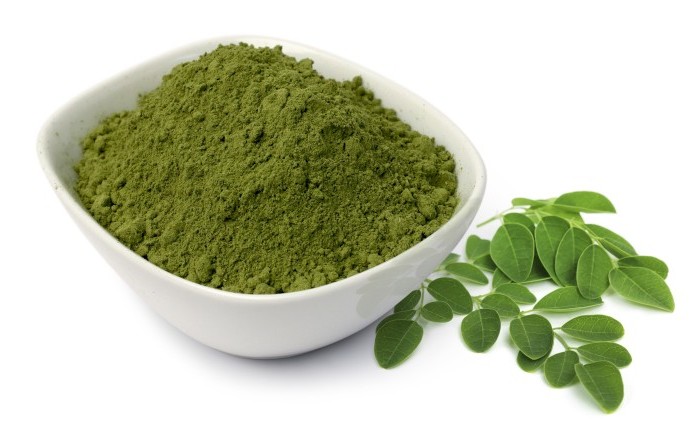
Search
Categories
- CBD Kratom (1)
- Kratom (78)
- Kratom Brands (19)
- Kratom Capsules (8)
- Kratom Powder (15)
- Kratom Recipes (3)
- Kratom Shelf Life (2)
- Kratom Strains (40)
- Kratom Vendor (3)
- Maeng Da Kratom (8)
- Uncategorized (15)
